- Home
- Isaac Asimov
In the Beginning Page 7
In the Beginning Read online
Page 7
46. With the animals of the sea and air created. God turns to the final and (from the human point of view) most important habitat, the land. Here, too, animals are created all at once in separate species according to the Biblical account, and here, too, the scientific view insists on creation by the long, slow process of evolution.
47. The word “cattle” is from the Latin word for “property” (so is the related word “capital”). In early herding societies, the chief form of wealth was in the herds of animals such as kine, sheep, goats, swine, camels, horses, donkeys, and mules.
The word has come to be restricted to kine (bulls and cows) to such an extent that the word “kine” has become obsolete. In this verse, however, it would seem best to take “cattle” as meaning domesticated mammals or, at least, mammals capable of domestication, as distinguished from wild animals.
It might be assumed from this verse that some mammals were created domesticated from the start, but that, of course, is not so. All animals were wild to begin with, and domestication was an arduous procedure that took place comparatively late in human history.
48. The “creeping thing” here refers to all nonflying nonmammals. Chiefly, this means reptiles (a term that itself comes from the Latin word meaning “to creep”) such as snakes and lizards. It would also include land amphibia, such as toads, and land invertebrates that do not fly. such as snails, spiders, worms, and so on.
49. By “beast of the earth” is meant the wild mammals, generally.
Actually, the mammals did not appear on Earth at the same time us other land-living organisms. Animals first colonized the dry land about four hundred million years ago, and to begin with, they were invertebrates and amphibia.
Not until about one hundred eighty million years ago did the first mammals appear; they were small and primitive varieties resembling the opossum more than any other present-day mammals.
Mammals didn’t really come into their own till the giant reptiles became extinct seventy million years ago, and they didn’t become the recognizable mammals of today till about thirty-five million years ago.
25 And God made the beast of the earth after his kind, and cattle after their kind, and every thing that creepeth upon the earth after his kind: and God saw that it was good.
26 And God said, Let us 50 make man 51 in our image, after our likeness; 52 and let them have dominion over the fish of the sea, and over the fowl of the air, and over the cattle, and over all the earth, and over every creeping thing that creepeth upon the earth.53
50. God is now ready for the final, climactic act of the Creation. It is still the sixth day, the one on which the land animals are created, but there is still a land-living creature remaining to be formed who is not, in the eyes of the Biblical writers, an animal but is something infinitely more.
The magnitude of this final act is such that God, who, till now, has been pictured as issuing his commands with instant decision, is pictured (however briefly) taking counsel, as though, for this one thing, he can use advice.
The phrase “Let us” certainly sounds as though God is addressing someone, as though more than one entity is involved. In the Babylonian Creation-myth, which the P-document adapts, there was indeed more than one entity involved; there were numerous gods, and as a matter of fact, the word “God” in the P-document is the translation of the Hebrew Elohim, which is the plural form for the Hebrew word for God and should, properly, be translated as “gods.”
Since a polytheistic interpretation of the Creation-tale of the P-document is unthinkable to those who accept the Bible as a holy book, alternate explanations have been offered. The phrase “let us.” instead of “let me” (and, later in the verse, the use of “our” instead of “my”) has been explained as the use of the royal “we” or the editorial “we,” a term that indicates majesty or that deliberately seeks to suppress individuality. However, such uses of the first-person plural are comparatively recent inventions and weren’t known in Biblical times.
It might be argued that the plural is used in reference to the vast multiplicity of power and attributes of an infinite deity, so that the use of the singular is inappropriate. This, however, verges too close to an admission of polytheism.
Another possibility is that God is here addressing the angels. It might be that in the ages before the first verse of the Bible, God had created a heavenly state with an angelic court, and that the Creation as described in the P-document was carried through with the cooperation of angels or, at the very least. for the delectation of the angels, who form an admiring audience. In that case, this final “let us” is to call their attention to the particular virtuosity of the final act of creation and make sure that none of them miss it by allowing their attention to wander at the crucial moment.
However, the notion of a multiplicity of angels as constituents of a heavenly court is a rather late development in Jewish thinking. It arose during the period when the Jews formed part of the Persian Empire, with its dualistic philosophy of the cosmos. At the time the P-document came to be in its present form, the Persian influence had not yet made itself felt.
To Christians, who consider God to be a Trinity of three co-equal aspects—Father, Son, and Holy Spirit—the “let us” might be viewed as the three aspects of the Trinity communing among themselves. This is an interesting thought, which would explain the verse neatly, but there is no sign anywhere in the Old Testament that the Jews accepted the notion of a Trinity.
The most straightforward explanation arises from the fact that, as far as we know, primitive religion has always been polytheistic in nature. It has always seemed to primitive peoples that every different natural phenomenon requires a different deity.
The first person we know of who seemed to think that a single God could wield the power necessary to control and guide all earthly phenomena was the Egyptian Pharaoh Amenhotep IV, who took the name Ikhnaton and who reigned from 1385 to 1358 B.C. His attempted religious reformation did not, however, long outlive his death.
The tribes of Israel in their early days were probably also polytheists, and the monotheists among them (always a minority until the Babylonian captivity) struggled for centuries to impose their views on the rest of the nation without much success. The Bible indicates that well enough.
By the time the Bible was written down in its present form however, the writers were staunch monotheists, and the history of Israel was retold from a monotheist point of view.
The legends preceding known history were also revised to reflect the monotheist point of view, and this wasn’t always easy. Some of the tales and legends were very familiar in their polytheistic form, and some turns of phrase were too well known to be altered.
Thus, the Israelites and all the surrounding people, including the Egyptians and the nations of the Tigris-Euphrates valley, would speak of “the gods” rather than of “God”; that is, in Hebrew, of Elohim rather than El. Elohim became such a familiar term that it became inseparable from the deity, and when the priestly writers imposed a strictly monotheistic interpretation on their version of the Babylonian Creation-myth, they still had to keep the plural Elohim for the singular deity.
This would also account for the use of “Let us” and “our.” The terms were too familiar to change even though they harked back to an earlier and an inadmissible state of polytheism.
51. The word “man” is a translation of the Hebrew word adam. The word adam is not really a proper name, though it came to be used as one.
The formation of human beings is here described as the last act of Creation; from the scientific viewpoint, this is not very far wrong.
The first primates, the broad group of mammals that includes the human species, evolved about seventy million years ago, not long after the extinction of the dinosaurs. It was not till forty million years ago that there evolved a tailless primate of a type we might recognize as an ape.
Perhaps twenty million years ago, the first species evolved that resembled modern human beings somew
hat more than it resembled modern apes—this species was the first “hominid.”
It was not till a mere two million years ago that the first species evolved that was sufficiently like modern human beings to be put in the same genus; “Homo.” This was Homo habilis, whose brain, while considerably smaller than yours or mine, was already larger than that of any ape living, either then or now.
About one hundred fifty thousand yours ago, the first specimens of Homo sapiens appeared. Those oldest forms of our species are commonly known as Neanderthal men. The bony structure of the Neanderthal skeleton differs from ours in ways that, while minor, are noticeable.
Finally, by fifty thousand years ago, “modern man” appeared; human beings like ourselves in every particular.
Modern man, then, has existed for 1/1400 of the time that primates in general have existed; 1/70,000 of the time that life as a whole has existed on Earth; less than 1/90,000 of the time that the Earth has existed; and about 1/300,000 of the time the Universe has existed.
52. The phrase “in our image, after our likeness” is usually interpreted, these days, as meaning that God intends to give humanity the power of reason, or the power of ethical judgment, or the possession of an immortal soul, or the capacity to grasp the existence of and to worship God—all of these qualities being similar to attributes possessed by God and none of these qualities being possessed by any other form of life.
In all early forms of religion, however, deities are pictured very often in human shape, though sometimes in animal shape and sometimes in a mixture of animal and human.
The best examples of representations of deities that we know in our present Western culture are the statues of the gods formed by the Greeks. These are not only clearly human but extraordinarily good-looking as well, as one might expect.
It doesn’t take much risk to suppose that the early Israelites, like all the surrounding peoples, thought of divine beings as human in shape, though some of the features of animals might be added as well. (Even today, we generally picture angels as human beings in nightgowns with large bird wings attached.)
If we think of God today, we are very likely to think of him as human in appearance—rather like Michelangelo’s picture of God on the ceiling of the Sistine Chapel—a stern patriarch with a long white beard.
It could well be, then, that the writers of the P-document in composing this phrase, meant it literally. They viewed God as possessing a human appearance, though, of course, one that is supernaturally brilliant and handsome. Human beings, shaped after God’s form, are in this way distinct from all other forms of life.
In the scientific view, of course, there is no distinction of any importance between human beings and other forms of life. The human being is made up of cells just as all other forms of life are, right down to the bacteria. The key molecules making up the human being are the nucleic acids and proteins, which make up all other forms of life without exception, even down to the subcellular viruses.
Physiologically, the human being resembles other mammals just as much us other mammals resemble each other, and our species clearly belongs to the order of primates. Furthermore, the resemblances between the human being, on the one hand, and the chimpanzee and the gorilla, on the other, are so detailed, right down to the minutest point of physiology and biochemistry, that the real puzzle is that the small differences that do exist are sufficient to produce three different species.
The course of evolution, insofar as it explains the formation of all the species of life, also explains the formation of Homo sapiens. There are no added features to the evolutionary account, not one, that must be added to account for the human being.
The only difference between ourselves and the other animals worth mentioning is that we have an extraordinarily large brain for our size and an extraordinary supple pair of hands. The amount by which we exceed the chimpanzee and gorilla in this respect is sufficient to account for our science, art, philosophy, and philanthropy—to say nothing of our crimes and follies.
53. Human beings at the present time clearly dominate the earth and most of its life forms. In the Biblical account this is so from the start, and by divine; fiat. Human beings were created in order to be master, and the other living things, and even Earth itself, were created only to serve us.
In the scientific view, however, this is not the way it was from the beginning. Earth existed for 4.6 billion years before even the first life-form that sketchily resembled a human being came into existence.
Then, for millions of years after the first hominids appeared, they were only animals like other animals, perhaps no more successful at coping with the environment than are chimpanzees today.
It was perhaps five hundred thousand years ago that hominids (at a time when Homo sapiens did not yet exist) first began to make use of fire, and it was only then that they had something no other animal had ever had or has ever gained since.
When Homo sapiens appeared on the scene, the quality of tools (axes, spears, bows-and-arrows) improved to the extent where human beings, working in coordination, could destroy much larger animals. The woolly mammoth, it is thought, was hounded to extinction by primitive Siberian hunters between ten and twenty thousand years ago.
Since then, there has been no question that human beings have mastered all other large forms of life. We have even, in the last century and a half, made headway against small forms of life such as insects, parasitic worms, and microscopic disease agents. There our domination is by no means complete, and the result is yet in doubt.
Furthermore, it is now questioned whether it is wise for human beings even to aspire to “dominion” in too literal a fashion and to take too seriously the implication of this verse of the Bible. Human beings have brought about the extinction of many species of plants and animals, and the rate at which species are being destroyed is far greater now than it has ever been before. Such extinctions may well upset the ecological balance of life as a whole.
Then, too, human beings have altered the face of the Earth in many ways by cutting down forests, planting grainfields, building dams and cities, polluting land, sea, and air with the products and wastes of their activities. This has all been done without much worry as to how these alterations are affecting the welfare of life and of human beings in particular. We may well be laying the groundwork for our own destruction.
It is becoming rather obvious that human beings would be better off to exercise their “dominion” by deciding to have less absolute “dominion.” People had better think of themselves as caretakers of Earth and not as its masters.
27 So God created man in his own image, in the image of God created he him; male and female 54 created he them.
54. It would seem from this verse that both sexes were created simultaneously, and this certainly agrees with the scientific view.
In the scientific view, human beings evolved as a two-sexed animal. This had to be, since human beings were evolved from two-sexed predecessors who were in turn evolved from two-sexed predecessors all the way back to some primitive wormlike organism.
28 And God blessed them, and God said unto them, Be fruitful, and multiply, and replenish the earth, and subdue it: and have dominion over the fish of the sea, and over the fowl of the air, and over every living thing that moveth upon the earth.
29 And God said, Behold, I have given you every herb bearing seed, which is upon the face of all the earth, and every tree, in the which is the fruit of a tree yielding seed; to you it shall be for meat.55
55. It would appear from this verse that humanity was created with a purely vegetarian diet. (“Meat” is used here, by the way, to mean food generally, rather than animal muscle specifically, and the Revised Standard Version uses the word “food” here.)
This is surely not so in the scientific account of man’s beginning. The primates were evolved from insectivorous creatures, and many primates eat insects as well as plants. Though the gorilla is entirely vegetarian, the chimpanzee will on occasion eat
meat if it has the chance.
Human beings are more nearly carnivorous than are any other primates, and hominids as far back as we can make out ate animal life when they could get it.
Undoubtedly there are human beings who are vegetarians out of a dislike for animal food, or out of humane feeling for animals, or out of some religious teaching, but I suspect that most human beings, if they consulted their own tastes, and if meat were freely available, would be carnivorous, and that this would always have been true as long as the species has existed.
30 And to every beast of the earth, and to every fowl of the air, and to every thing that creepeth upon the earth, wherein there is life, I have given every green herb for meat: 56 and it was so.
56. Apparently all animal life was created with a vegetarian diet, according to the P-document, but this is surely even less likely than it is in the case of human beings specifically. As best we can tell from our study of evolution, as soon as animals evolved, some must have eaten others.
As long as one thinks that plants are not alive in the same sense that animals are, then it is rather natural to think that plants serve the specific and sole purpose of being food for animals. From that standpoint, for one animal to eat another, for life to eat life, would seem a sort of perversion.
Once it is recognized that plants and animals are equally alive and that all animal life eats life, then it becomes not very important whether the life eaten is plant or animal.
In fact, it is essential that animals be eaten if the components of their tissues are to be “recycled” and brought back into the general pool of material on which all living things depend for growth and multiplication. If animals were not eaten, all of potential life substance would be eventually tied up in the form of dead animals.
Of course, in default of all else, such dead animals decay, but by decay we merely mean that they are eaten by microorganisms of which the Biblical writers were unaware. In short, a pure vegetarian diet for all animals is simply impossible.
31 And God saw every thing that he had made, and, behold, it was very good. And the evening and the morning were the sixth day.57

 The Return of the Black Widowers
The Return of the Black Widowers The Stars, Like Dust
The Stars, Like Dust Foundation
Foundation David Starr Space Ranger
David Starr Space Ranger I, Robot
I, Robot Puzzles of the Black Widowers
Puzzles of the Black Widowers Casebook of the Black Widowers
Casebook of the Black Widowers The Ugly Little Boy
The Ugly Little Boy Azazel
Azazel Pebble in the Sky
Pebble in the Sky Foundation and Empire
Foundation and Empire The Complete Robot
The Complete Robot Fantastic Voyage
Fantastic Voyage Foundation and Earth
Foundation and Earth The Naked Sun
The Naked Sun The Currents of Space
The Currents of Space Foundation's Edge
Foundation's Edge The Robots of Dawn
The Robots of Dawn Nightfall
Nightfall The Caves of Steel
The Caves of Steel Prelude to Foundation
Prelude to Foundation Nemesis
Nemesis Robot Dreams
Robot Dreams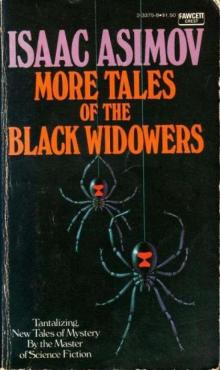 More Tales of the Black Widowers
More Tales of the Black Widowers The Complete Stories
The Complete Stories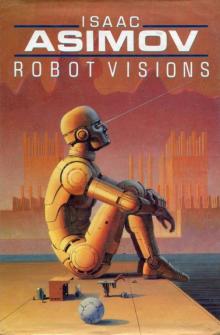 Robot Visions
Robot Visions Lucky Starr And The Moons of Jupiter
Lucky Starr And The Moons of Jupiter Lucky Starr and the Big Sun of Mercury
Lucky Starr and the Big Sun of Mercury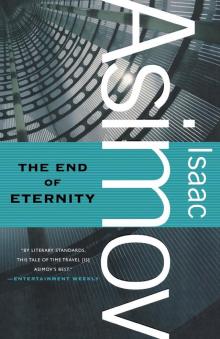 The End of Eternity
The End of Eternity The Bicentennial Man and Other Stories
The Bicentennial Man and Other Stories Lucky Starr And The Rings Of Saturn
Lucky Starr And The Rings Of Saturn Buy Jupiter and Other Stories
Buy Jupiter and Other Stories Forward the Foundation
Forward the Foundation Lucky Starr and the Oceans of Venus
Lucky Starr and the Oceans of Venus The Positronic Man
The Positronic Man The Portable Star
The Portable Star Asimovs Mysteries
Asimovs Mysteries Earth Is Room Enough
Earth Is Room Enough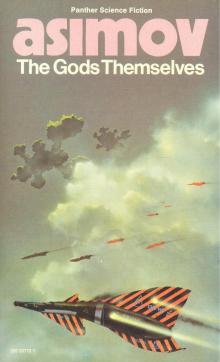 The Gods Themselves
The Gods Themselves Youth
Youth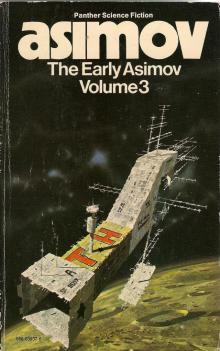 The Early Asimov Volume 3
The Early Asimov Volume 3 The Winds of Change and Other Stories
The Winds of Change and Other Stories Of Time, Space, and Other Things
Of Time, Space, and Other Things Nine Tomorrows
Nine Tomorrows Time Warps
Time Warps Robots and Empire
Robots and Empire Young Star Travelers
Young Star Travelers Fantastic Voyage II: Destination Brain
Fantastic Voyage II: Destination Brain Second Foundation
Second Foundation The Rest of the Robots
The Rest of the Robots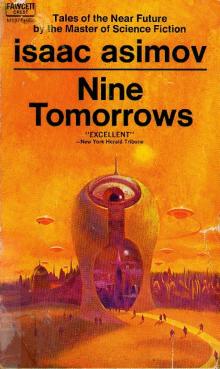 NINE TOMORROWS Tales of the Near Future
NINE TOMORROWS Tales of the Near Future Daneel Olivaw 1 - The Caves of Steel
Daneel Olivaw 1 - The Caves of Steel THE BICENTENNIAL MAN
THE BICENTENNIAL MAN David Starr Space Ranger (lucky starr)
David Starr Space Ranger (lucky starr)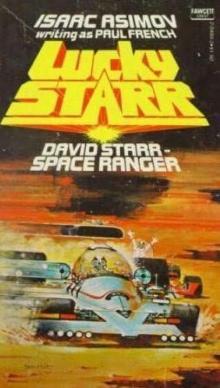 David Starr Space Ranger (ls)
David Starr Space Ranger (ls) Lucky Starr And The Big Sun Of Mercury ls-4
Lucky Starr And The Big Sun Of Mercury ls-4 Pebble In The Sky te-1
Pebble In The Sky te-1 Asimov’s Future History Volume 9
Asimov’s Future History Volume 9 Gold: The Final Science Fiction Collection
Gold: The Final Science Fiction Collection Foundation and Earth f-7
Foundation and Earth f-7 Asimov's New Guide to Science
Asimov's New Guide to Science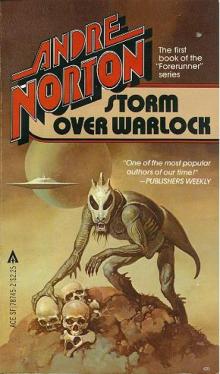 STORM OVER WARLOCK
STORM OVER WARLOCK Stars, Like Dust
Stars, Like Dust Norby The Mixed-Up Robot
Norby The Mixed-Up Robot Found!
Found! Asimov’s Future History Volume 11
Asimov’s Future History Volume 11 Second Foundation f-5
Second Foundation f-5 Asimov’s Future History Volume 15
Asimov’s Future History Volume 15 The Early Asimov. Volume 1
The Early Asimov. Volume 1 Secound Foundation
Secound Foundation Daneel Olivaw 3 - The Robots of Dawn
Daneel Olivaw 3 - The Robots of Dawn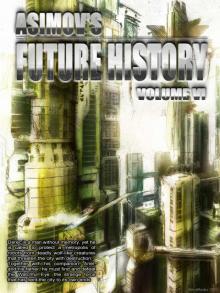 Asimov’s Future History Volume 6
Asimov’s Future History Volume 6 The Early Asimov. Volume 2
The Early Asimov. Volume 2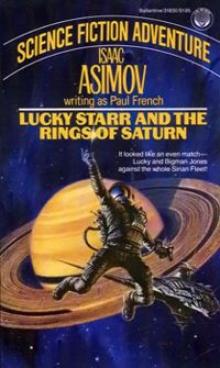 Lucky Starr And The Rings Of Saturn ls-6
Lucky Starr And The Rings Of Saturn ls-6 100 Malicious Little Mysteries
100 Malicious Little Mysteries Forward the Foundation f-2
Forward the Foundation f-2 I.Asimov: A Memoir
I.Asimov: A Memoir Foundation's Edge f-6
Foundation's Edge f-6 Lucky Starr and the Pirates of the Asteroids ls-2
Lucky Starr and the Pirates of the Asteroids ls-2 Robot City 1 & 2
Robot City 1 & 2 The Fourth Science Fiction Megapack
The Fourth Science Fiction Megapack Asimov’s Future History Volume 16
Asimov’s Future History Volume 16 The Dim Rumble
The Dim Rumble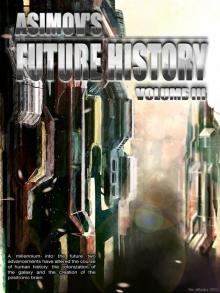 Asimov's Future History Volume 3
Asimov's Future History Volume 3 The Currents Of Space te-3
The Currents Of Space te-3 Asimov’s Guide To Shakespear. Volume 1
Asimov’s Guide To Shakespear. Volume 1 Asimov’s Future History Volume 13
Asimov’s Future History Volume 13 Asimov’s Future History Volume 12
Asimov’s Future History Volume 12 The Secret Sense
The Secret Sense Of Time and Space and Other Things
Of Time and Space and Other Things Norby tnc-2
Norby tnc-2 Norby The Mixed-Up Robot tnc-1
Norby The Mixed-Up Robot tnc-1 Misbegotten Missionary
Misbegotten Missionary Asimov’s Future History Volume 19
Asimov’s Future History Volume 19 Fantastic Voyage II: Destination Brain fv-2
Fantastic Voyage II: Destination Brain fv-2 Asimov’s Future History Volume 10
Asimov’s Future History Volume 10 Asimov's Future History Volume 2
Asimov's Future History Volume 2 Feeling of Power
Feeling of Power In the Beginning
In the Beginning The Caves of Steel trs-1
The Caves of Steel trs-1 Asimov's Future History Vol 2
Asimov's Future History Vol 2 Caliban c-1
Caliban c-1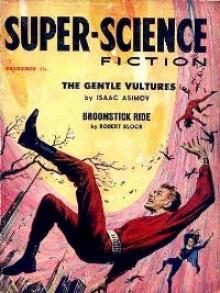 The Gentle Vultures
The Gentle Vultures Utopia c-3
Utopia c-3 Prelude to Foundation f-1
Prelude to Foundation f-1 Short Stories Vol.1
Short Stories Vol.1 Asimov’s Future History Volume 8
Asimov’s Future History Volume 8 Daneel Olivaw 4 - Robots and Empire
Daneel Olivaw 4 - Robots and Empire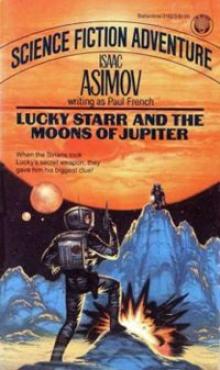 Lucky Starr The And The Moons of Jupiter ls-5
Lucky Starr The And The Moons of Jupiter ls-5 Gold
Gold Asimov’s Future History Volume 4
Asimov’s Future History Volume 4 Foundation and Empire f-4
Foundation and Empire f-4 Potential
Potential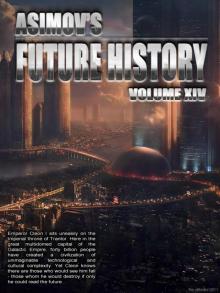 Asimov’s Future History Volume 14
Asimov’s Future History Volume 14 Asimov’s Future History Volume 7
Asimov’s Future History Volume 7 Daneel Olivaw 2 - The Naked Sun
Daneel Olivaw 2 - The Naked Sun Lucky Starr and the Pirates of the Asteroids
Lucky Starr and the Pirates of the Asteroids Foundation f-3
Foundation f-3 All the Troubles of the World
All the Troubles of the World Cleon the Emperor
Cleon the Emperor Asimov's Future History Volume 5
Asimov's Future History Volume 5 Asimov’s Future History Volume 20
Asimov’s Future History Volume 20 Robots and Empire trs-4
Robots and Empire trs-4 Profession
Profession It's Been a Good Life
It's Been a Good Life The Robots of Dawn trs-3
The Robots of Dawn trs-3 Lucky Starr And The Oceanf Of Venus ls-3
Lucky Starr And The Oceanf Of Venus ls-3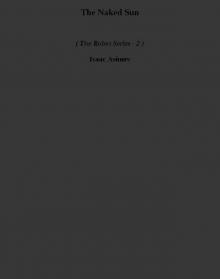 The Naked Sun trs-2
The Naked Sun trs-2 Asimov's Future History Volume 1
Asimov's Future History Volume 1